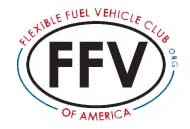Let’s talk about E15, or the use of 15 percent ethanol, 85 percent gasoline, in our conventional cars and light duty trucks. I don’t think people understand well enough why the Environmental Protection Agency (EPA) is conducting so much research on the fuel. What it really comes down to is emissions. Let me explain.
 Last Friday I attended the California Ethanol Symposium: An Examination of Demand vs. Feasibility and Viability. It was one of 32 events being held around the country sponsored in part by the Clean Transportation Education Project. Other companies participated in this event including the Antelope Valley Clean Cities, Clean Cities Coalitions (part of U.S. Department of Energy), Advanced Transportation Technology & Energy located at Rio Hondo College, and Purpose Focused Alternative Learning Corporation.
Last Friday I attended the California Ethanol Symposium: An Examination of Demand vs. Feasibility and Viability. It was one of 32 events being held around the country sponsored in part by the Clean Transportation Education Project. Other companies participated in this event including the Antelope Valley Clean Cities, Clean Cities Coalitions (part of U.S. Department of Energy), Advanced Transportation Technology & Energy located at Rio Hondo College, and Purpose Focused Alternative Learning Corporation.
Rich Cregar, an Instructor of Automotive Systems Technology at Wake Tech Community College in Raleigh, NC as well as the Co-Director of the Code Green CIP Project gave an in-depth presentation on ethanol that included comprehensive information about E15. He explained that there are three main reasons why E15 is safe to use in conventional vehicles and light duty trucks manufactured after 2007 (for the sake of space, I’ll shorten the reference to model year 2007 or newer from this point forward).
First, they all CAN networked and the car’s computer, if needed, can be easily and inexpensively updated to use E15. Second, All 2007 cars and new have an onboard air fuel ratio sensor that maintains correct emission levels. Third, there is an issue with the catalytic wash code. Ethanol tends to cylinder out emissions of aldehydes, which are carcinogenic hydrocarbon compounds. Catalytic converters in 2007 vehicles or later can deal with these aldehydes effectively, aka emission control.
Whereas 2007 vehicles have the ability to control “emissions” per se of E15, some, but not all cars manufactured before 2007 may not have this ability. That is why the EPA is still waiting for tests before they make a decision on whether to allow 2001 and newer vehicles to use e15.
So what happens if you use it and something goes wrong? Read More








 Last month President Obama signed into law legislation that included the extension of the Volumetric Ethanol Excise Tax Credit (VEETC) and the alternative fuels infrastructure tax credit. These two credits will continue to be key in the expansion of ethanol-blended fuels and blender pumps and a free webinar Wednesday is designed tohelp retailers learn more about how ethanol can increase profit opportunities while giving consumers more options.
Last month President Obama signed into law legislation that included the extension of the Volumetric Ethanol Excise Tax Credit (VEETC) and the alternative fuels infrastructure tax credit. These two credits will continue to be key in the expansion of ethanol-blended fuels and blender pumps and a free webinar Wednesday is designed tohelp retailers learn more about how ethanol can increase profit opportunities while giving consumers more options. 

 Ethanol industry campaigns targeting the general public and Congress have won top awards from Region II of the
Ethanol industry campaigns targeting the general public and Congress have won top awards from Region II of the 